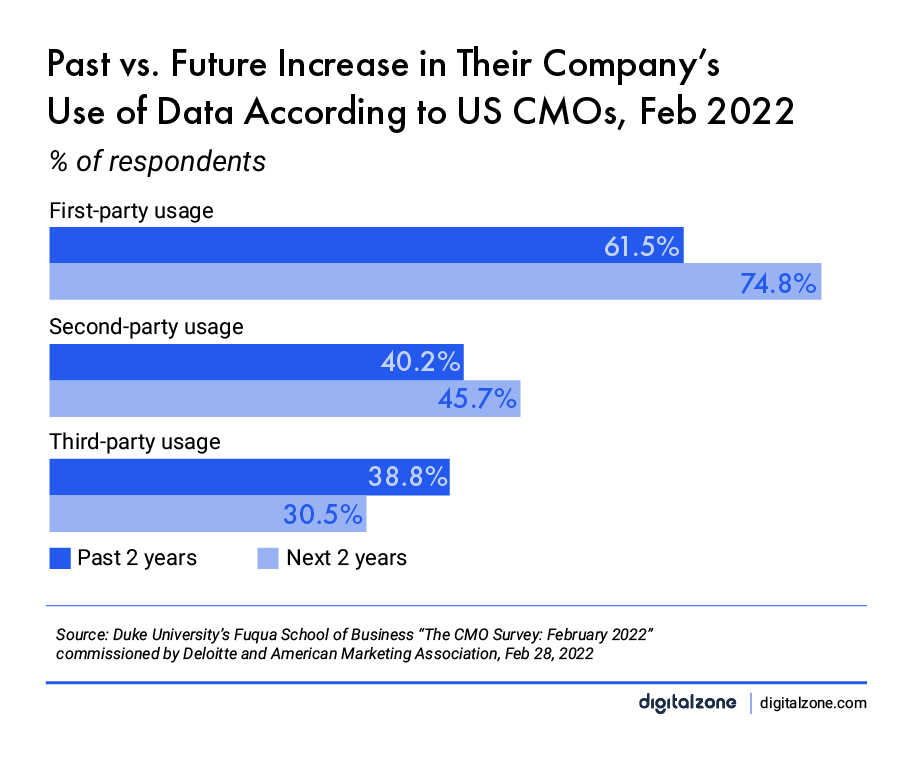
3 reasons why intent data may not be working for you.
Published on 7 June, 2023 | Author: Digitalzone
Intent data has gained a lot of popularity in the last 10 years, and it makes sense! Who doesn’t want to know when their prospects are actively in-market for their product? Unfortunately, it’s not quite the silver bullet marketers have been promised.
In this blog, we’ll explore the parts of intent data your vendors aren’t talking about and help you figure out the most strategic way to use intent for your business.
So, what is intent data?
Consider the trail left behind by online activities: searches, site visits, social interactions, etc. These digital breadcrumbs give us an idea of what the user is interested in and can ultimately signal an intent to buy. As marketers, these signals allow us to understand their needs better and refine our marketing approach accordingly.
Simply put, intent data tells you when someone is actively researching online for a solution based on their online activity.
While that sounds like a no-brainer investment, it’s not nearly that straight forward. There are a handful of things you need to know about your buyer to make sure you’re analyzing the right intent data. For example, most intent platforms require you to enter in keywords that would signal intent for your company. This important first step is kind of a big deal. There are often a lot of assumptions that have to be made and some serious testing to figure out what keywords make the most sense. Then you need to marry those keywords up to where that user may be in their buyer’s journey.
Layered on top of this is the simple fact that only 5% of people are going to be actively in the market for your product at any given time.
Over the last two years, there has been a slight decline in the usage of third-party intent data. Consequently, the question arises: is intent data alone sufficient enough?

Three reasons why intent data may not be working for you.
Every organization is different, but in talking through intent strategy with our clients we’ve seen a few trends. Intent data may not be working for you if:
- You don’t have a long enough buying cycle.
A long buying cycle of 6+months makes a difference. With a longer buying cycle, your buyer can start signaling intent early enough for you to still have time to create awareness of your brand and product, and ultimately capture demand. - You don’t have enough brand awareness.
Strong brand recognition will help secure your spot on the day one list and utilizing intent-data will bolster your spot on that list and increase the likelihood of conversion. - Your ABM list is too small.
You need to be able to cast a broader net with a more expansive target account list. While the most significant variable with intent tactics is time, overly narrowing your focus with intent-data will limit your likelihood of demand capture.
Strategic intent with the B2B buying committee.
At the heart of a meaningful intent strategy is knowing both your buyer and the buying committee.
Adapting your strategy to resonate with the buying committee is fundamental for success. Imagine this committee as a group of 6 to 10 individuals, each with their unique perspective and holding substantial decision-making power. Developing an intent strategy for the entire buying committee is another important consideration. The marketing stakeholder is probably not going to have the same intent keywords as the IT stakeholder. Understanding their roles, responsibilities, and unique needs leads the way to more effective results, trust-building, and strategic use of intent.
Key questions to ask yourself and your team:
- Is an intent strategy right for us?
- Do we have a strong brand strategy to maximize intent data investment?
- Are we leveraging all available insights from intent data?
Conclusion
Intent data is a valuable tool that’s not just for capturing demand in the later stages of the buyer’s journey. It can provide insights into pre-intent behaviors, helping formulate strategies to engage potential buyers. With any tech, there’s no real turnkey solution. You have to approach it with a best-fit strategy for your business and make sure it is aligned with teams from across the Marketing department to see true ROI.
